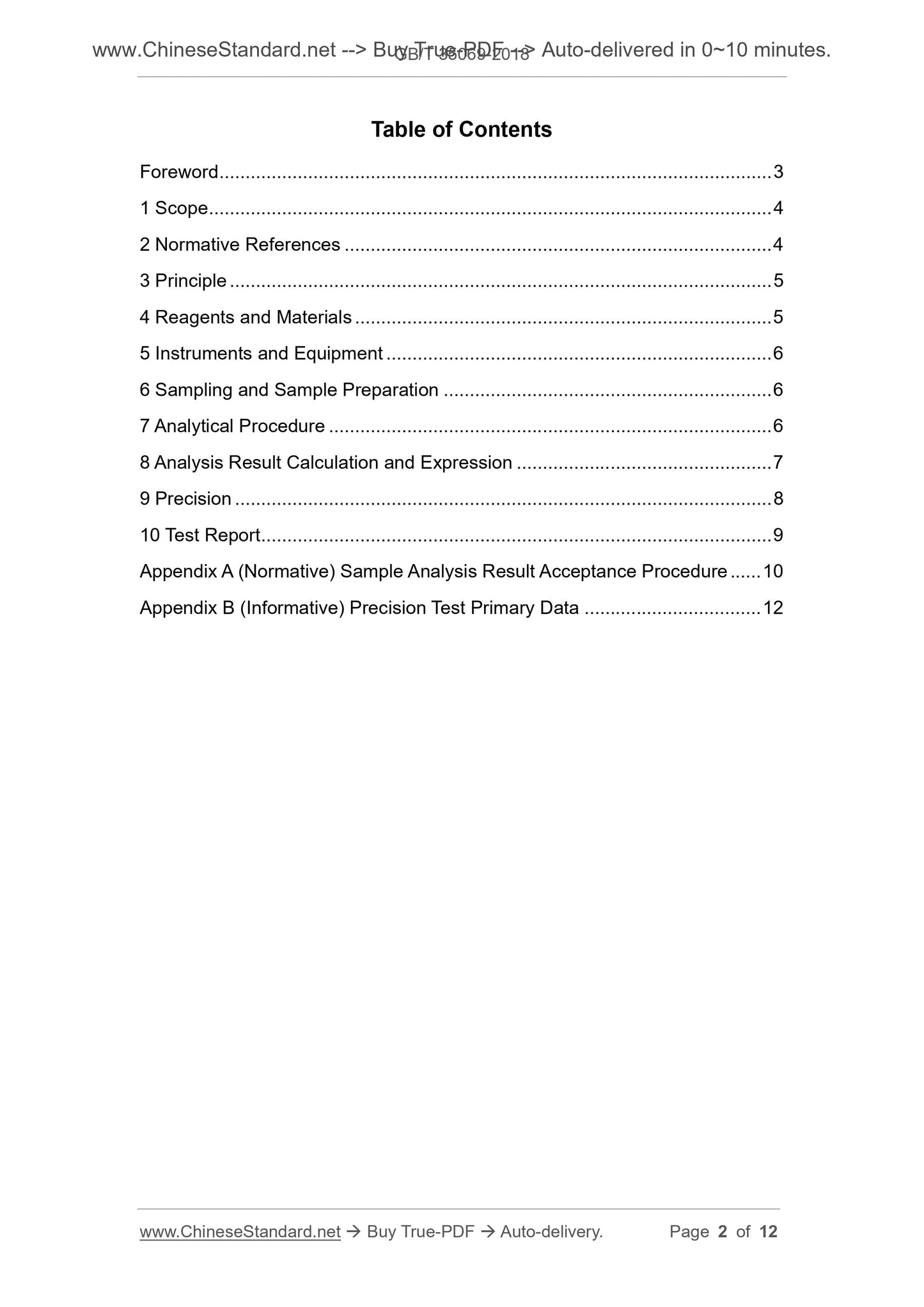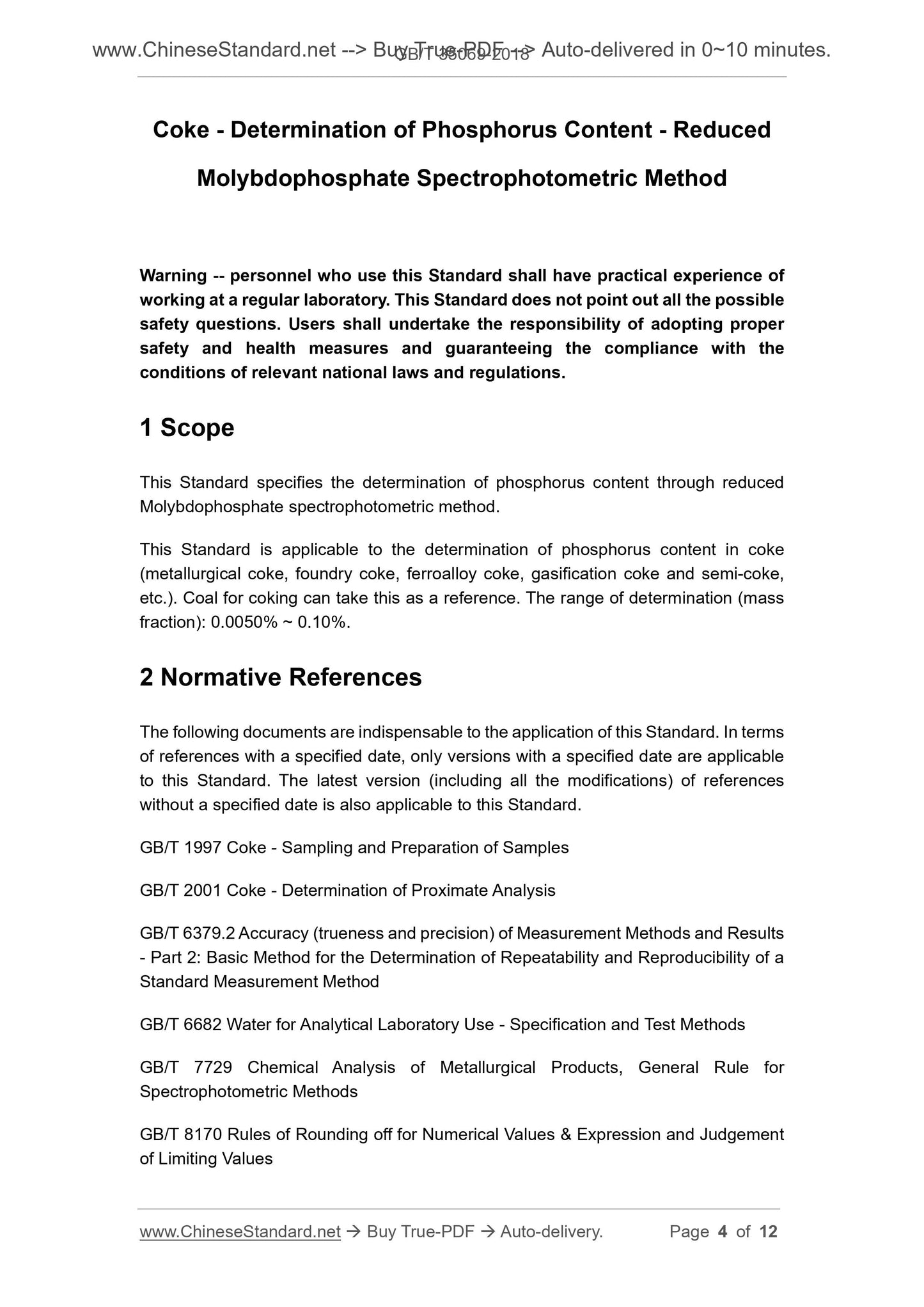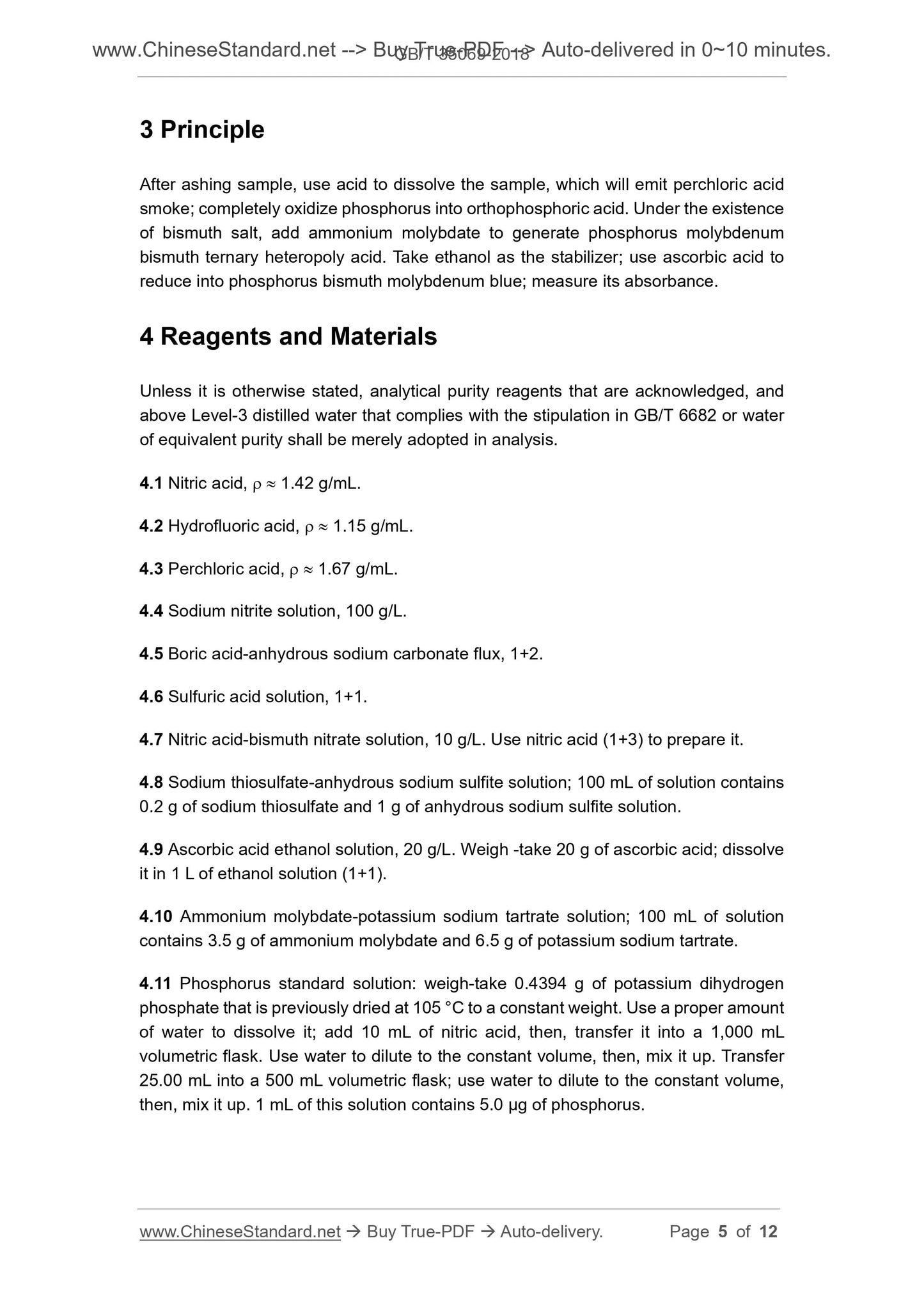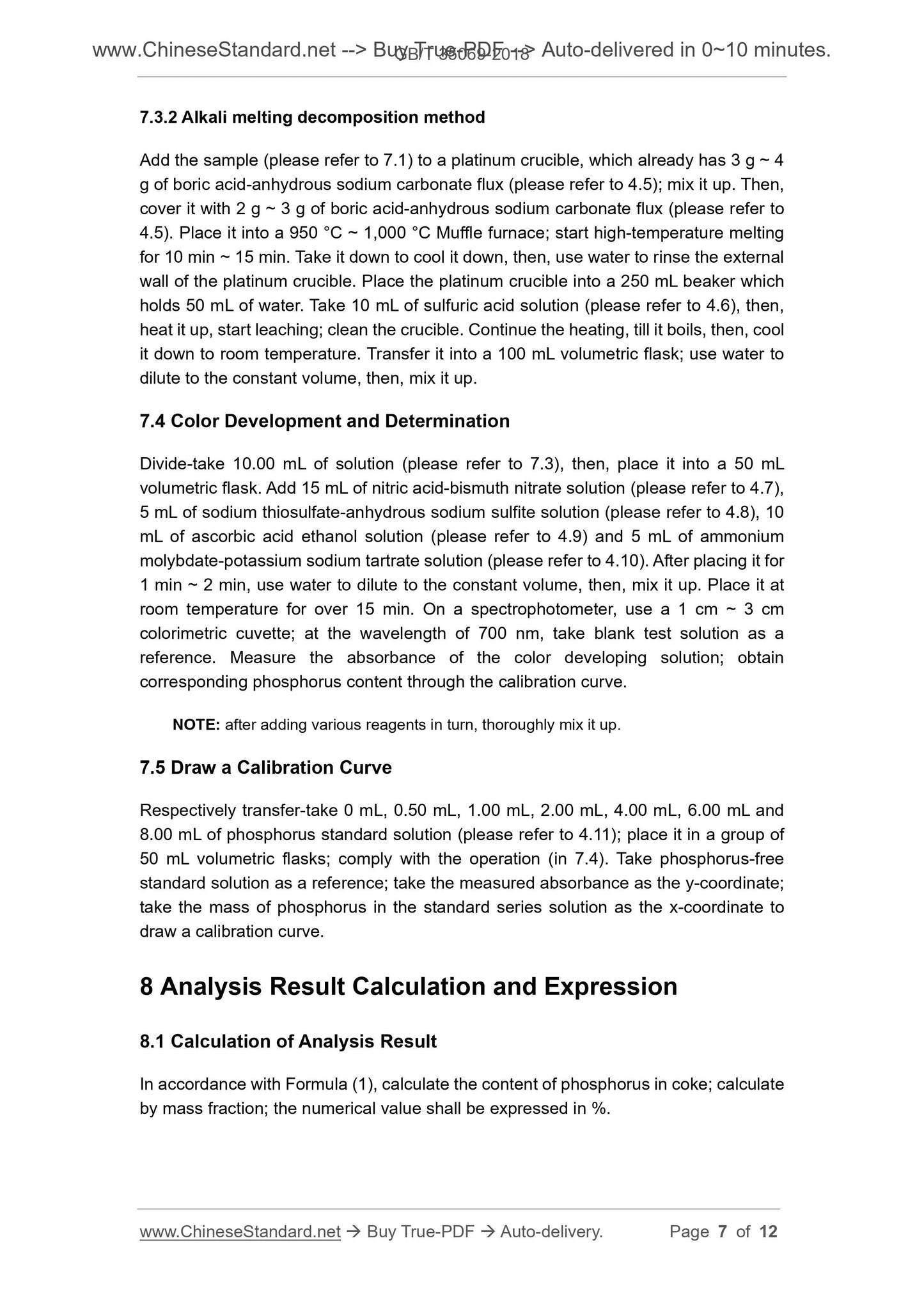1
/
of
5
www.ChineseStandard.us -- Field Test Asia Pte. Ltd.
GB/T 35069-2018 English PDF (GB/T35069-2018)
GB/T 35069-2018 English PDF (GB/T35069-2018)
Regular price
$130.00
Regular price
Sale price
$130.00
Unit price
/
per
Shipping calculated at checkout.
Couldn't load pickup availability
GB/T 35069-2018: Coke - Determination of Phosphorus Content - Reduced Molybdophosphate Spectrophotometric Method
Delivery: 9 seconds. Download (and Email) true-PDF + Invoice.Get Quotation: Click GB/T 35069-2018 (Self-service in 1-minute)
Newer / historical versions: GB/T 35069-2018
Preview True-PDF
Scope
This Standard specifies the determination of phosphorus content through reducedMolybdophosphate spectrophotometric method.
This Standard is applicable to the determination of phosphorus content in coke
(metallurgical coke, foundry coke, ferroalloy coke, gasification coke and semi-coke,
etc.). Coal for coking can take this as a reference. The range of determination (mass
fraction). 0.0050% ~ 0.10%.
Basic Data
| Standard ID | GB/T 35069-2018 (GB/T35069-2018) |
| Description (Translated English) | Coke - Determination of Phosphorus Content - Reduced Molybdophosphate Spectrophotometric Method |
| Sector / Industry | National Standard (Recommended) |
| Classification of Chinese Standard | H32 |
| Classification of International Standard | 75.160.10 |
| Word Count Estimation | 8,830 |
| Date of Issue | 2018-05-14 |
| Date of Implementation | 2018-12-01 |
| Regulation (derived from) | National Standards Announcement No. 6 of 2018 |
| Issuing agency(ies) | State Administration for Market Regulation, China National Standardization Administration |
Share









